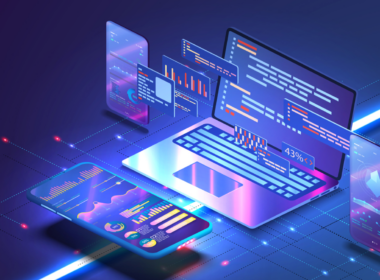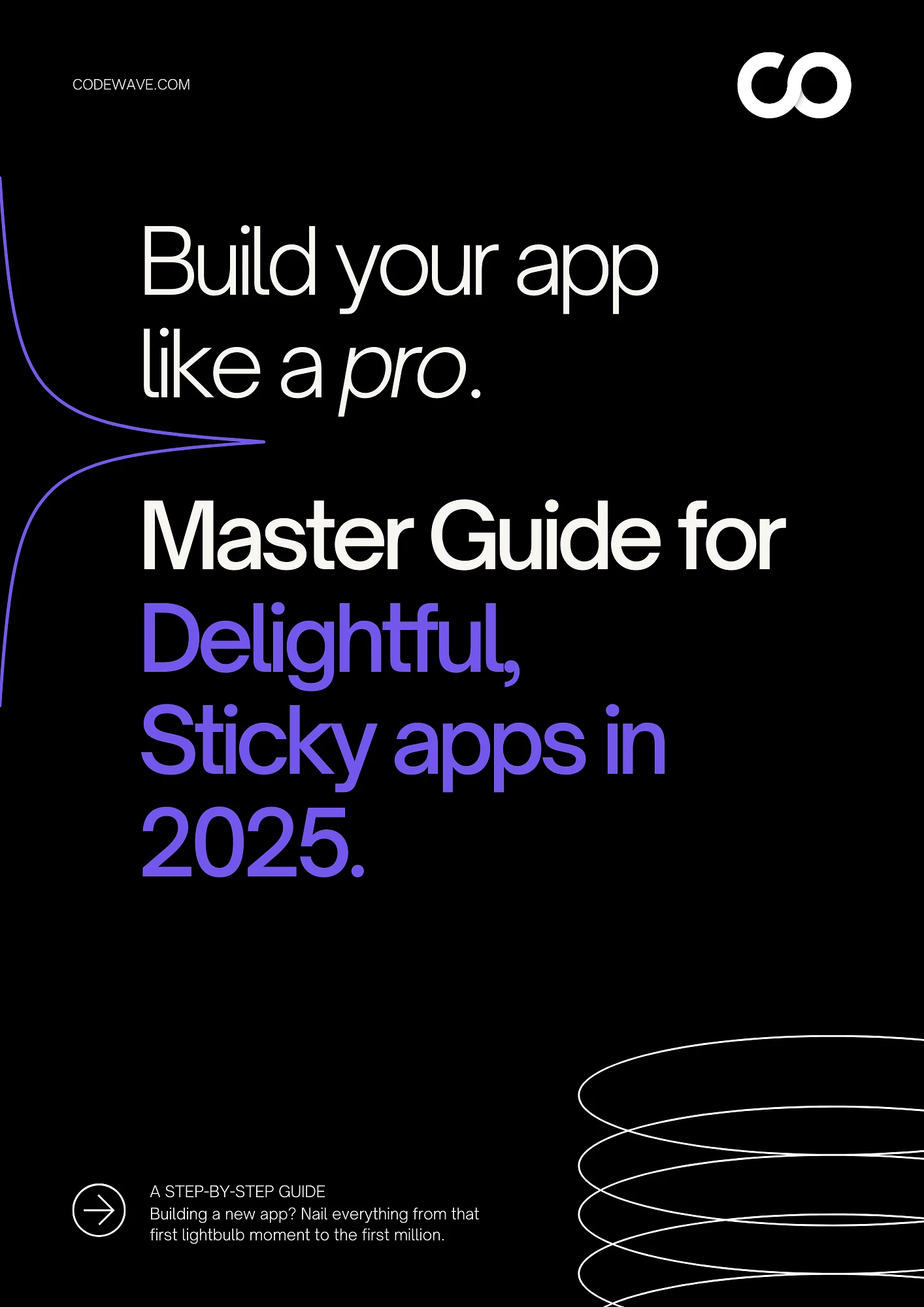Productivity hasn’t changed much in decades. We’ve had faster computers and better software, but the work itself stayed largely the same. AI is finally breaking that pattern. McKinsey estimates generative AI could generate $2.6 trillion to $4.4 trillion in annual productivity value across 63 analyzed use cases.
That means real transformation, not just incremental improvements. Teams are automating entire workflows that they once thought required human judgment. The results are freeing up talented people for higher-impact work. And this is just the beginning.
This article examines how AI is redefining productivity and where your organization should focus first.
Key Takeaways
- McKinsey estimates generative AI could add $2.6-4.4 trillion annually across 63 use cases, signaling massive potential for productivity transformation across industries.
- Successful AI adoption starts with identifying specific bottlenecks, not deploying every available tool. Focus beats feature overload every time.
- AI enables non-proportional scaling where you grow revenue and output without matching increases in headcount or operational complexity.
- The productivity paradox is real: more tools often mean less efficiency. Integration with existing workflows matters more than technology sophistication.
- AI improves with use through iterative learning from your data and feedback, making early adoption and continuous refinement critical for long-term competitive advantage.
Generative AI and Its Role in Productivity
In this section, we’ll explore what generative AI is and how it differs from traditional AI, along with practical examples of how businesses are using it to improve productivity.
What is Generative AI?
Generative AI refers to a type of artificial intelligence that creates new content, solutions, and predictions. Unlike traditional AI, which focuses on analyzing and processing data, generative AI builds something new, be it text, visuals, models, or even forecasts.
How Is Generative AI Different from Other AI?
While many AI tools automate repetitive tasks, generative AI takes it a step further. It doesn’t just follow pre-set instructions; it creates original outputs based on input data. Examples include:
- Writing articles, marketing copy, and reports.
- Designing graphics, videos, or even websites.
- Generating new ideas for products, campaigns, or business strategies.
Examples of AI in Action
- Content Generation: Tools like ChatGPT create blog posts, product descriptions, and personalized marketing messages, saving time and improving output quality.
- Customer Service: AI-powered chatbots (e.g., Intercom, Drift) handle customer inquiries 24/7, solving issues faster and improving customer experience.
- Supply Chain Optimization: AI platforms like Llamasoft and IBM Watson predict product demand, automate inventory management, and optimize delivery routes to reduce costs and boost efficiency.
- Marketing Campaigns: Platforms like Copy.ai use AI to generate personalized marketing copy and ad campaigns, targeting audiences with relevant content based on behavior patterns.
- Human Resources: AI-driven recruitment tools like HireVue analyze resumes and conduct virtual interviews, improving candidate selection and reducing hiring time.
- Product Design: Generative AI platforms like Autodesk can design prototypes, create 3D models, and assist in engineering, allowing faster iterations and product development.
- Legal Work: AI tools like ROSS Intelligence assist lawyers in reviewing contracts and performing legal research, significantly cutting down the time spent on manual tasks.
- Entertainment: AI tools like Runway generate realistic video content, scripts, or animations, allowing creators to develop ideas faster with fewer resources.
The Business Benefits of AI-Driven Productivity
AI isn’t just saving time. It’s changing what’s possible with your current resources. Companies are seeing measurable gains across operations, from faster customer responses to smarter decision-making.
The biggest advantage? You can grow revenue and output without matching that growth with headcount. That’s a fundamental shift in how businesses scale.
Customer Service That Scales Instantly
AI handles routine inquiries while routing complex issues to human agents. Response times drop from hours to seconds. Customers get help at any hour without expanding your support team.
Support teams report handling significantly more tickets with the same staff size. The AI learns from every interaction, getting better over time.
Smarter Decisions Through Better Data
AI analyzes patterns across millions of data points that humans would miss. Finance teams use it to spot fraud, forecast cash flow, and optimize pricing. Retailers predict inventory needs with higher accuracy.
Marketing teams identify which campaigns will perform before spending the budget. The technology turns gut feelings into data-backed strategies, and it happens in real time.
Operations That Run Leaner
Manufacturing plants use AI to predict equipment failures before they happen. HR departments automate resume screening and initial candidate outreach. Supply chain managers optimize routes and reduce waste. These aren’t future concepts.
Many organizations are already seeing meaningful efficiency gains in specific workflows where AI handles repetitive, data-heavy processes. The key is identifying where AI adds clear value.
Growing Without the Growing Pains
Traditional scaling meant hiring proportionally. Double your customers, double your team. AI breaks that model. One sales team with AI support can handle larger workloads. Customer success managers can oversee larger portfolios.
Administrative tasks that consumed hours now take minutes. You’re not replacing people. You’re multiplying what each person can accomplish.
How Companies Are Using AI Today
AI adoption looks different across industries, but the pattern is the same. Organizations identify bottlenecks, apply AI strategically, and see rapid improvements. Here’s what that looks like in practice.
| Industry | AI Application | Impact |
|---|---|---|
| Fintech | Fraud detection, credit scoring, personalized financial advice | Faster loan approvals, reduced risk exposure, better customer experience |
| Education | Personalized learning paths, automated grading, student support chatbots | Teachers focus on instruction, students receive tailored help, administrative workload decreases |
| Healthcare | Diagnostic assistance, patient scheduling, treatment recommendations | Quicker diagnoses, optimized staff time, better patient outcomes |
| Agriculture | Crop monitoring, yield prediction, resource optimization | Higher yields, less waste, more data-driven farming decisions |
| Energy | Grid optimization, predictive maintenance, demand forecasting | Lower downtime, more efficient distribution, cost savings |
| Transportation | Route optimization, fleet management, predictive maintenance | Reduced fuel costs, faster deliveries, fewer breakdowns |
| Retail | Inventory management, personalized recommendations, dynamic pricing | Less overstock, higher conversion rates, improved margins |
| Travel | Dynamic pricing, support automation, itinerary planning | Higher occupancy, quicker bookings, better traveler experience |
| Insurance | Claims processing, risk assessment, customer onboarding | Faster claims handling, accurate underwriting, smoother operations |
If you’re looking to build custom AI solutions relevant to your operations, that’s where we come in. At Codewave, we develop enterprise AI systems designed around your specific workflows.
Our proprietary Code Accelerate platform includes tools, libraries, and reusable components that speed up development by up to 3x. That means you get to market faster with solutions built for your business, not generic off-the-shelf tools.
Get in touch to learn how we can help you implement AI in your operations.
Also read: Top 10 AI Applications Across Major Industries
How to Use AI to Boost Productivity
You don’t need to overhaul everything at once. The companies getting this right start with clear problems and specific solutions. Here’s how to approach AI in a way that delivers results without creating chaos.
Identify Your Biggest Bottlenecks First
Look at where your teams spend the most time on repetitive work. Customer support buried in the same questions? Sales reps writing similar emails? Data analysts pulling reports manually? Those are your starting points. AI works best when it tackles high-volume, predictable tasks that eat up hours but don’t require complex judgment.
In practice: Say your customer service team spends 60% of their time answering basic questions about order status, return policies, and account access. An AI chatbot handles these routine queries while your agents focus on complex issues that need human problem-solving. The result is instant answers for customers and more meaningful work for your team.
Choose Tools That Fit Your Workflow
Don’t force your team to adapt to new platforms. Find AI solutions that integrate with what you already use. If your sales team lives in your CRM, add AI there. If support runs through your ticketing system, enhance that. The best AI is invisible. It makes existing work faster, not different.
In practice: Instead of buying standalone AI software, you add AI capabilities directly into your existing CRM. Your sales reps get email draft suggestions, meeting summaries, and follow-up reminders without switching tabs. Adoption happens naturally because the workflow stays the same.
Start Small and Measure Everything
Pick one department or one process. Implement AI there and track what changes. Response times, completion rates, employee satisfaction, cost per transaction. Real numbers tell you if it’s working. Once you prove value in one area, scaling becomes easier because you have concrete evidence.
In practice: Your finance team starts by using AI just for expense report processing. You track approval times, error rates, and employee hours saved. After three months of clear improvements, you expand AI to invoice processing and budget forecasting using the same measurement framework.
Train Your Team Properly
AI only works if people use it. That means hands-on training, not just documentation. Show your team how AI makes their jobs easier, not how it replaces them. Address concerns directly. Give people time to adjust. The technology is ready. The human side takes longer.
In practice: Your marketing team schedules weekly working sessions where members share AI prompts that work well and troubleshoot issues together. You create a shared library of effective prompts for common tasks. Within a month, AI will become part of the daily workflow rather than an intimidating new requirement.
Iterate Based on What You Learn
Your first implementation won’t be perfect. That’s fine. Gather feedback, adjust settings, and refine prompts. AI improves with use. The patterns it learns from your data make it more valuable over time. Think of it as a tool that gets better the more your team engages with it.
In practice: Your HR department launches AI-assisted resume screening but finds it initially misses qualified candidates with non-traditional backgrounds. You adjust the criteria and retrain the system based on successful hires. Six months in, the AI identifies strong candidates that might have been overlooked in manual screening.
The Productivity Paradox We Need to Talk About
More tools don’t automatically mean more productivity. In fact, they often create the opposite problem. Teams drown in dashboards, notifications, and half-used software. The result is distraction dressed up as innovation.
The real issues:
- Tool overload fragments workflows instead of streamlining them
- Teams spend time learning platforms rather than doing work
- Data sits in silos across disconnected systems
- Nobody has clarity on what’s working and what isn’t
AI can make this worse if you treat it like just another tool to add to the stack. The companies seeing real gains aren’t adopting everything. They’re choosing specific AI applications that solve clear problems.
What works instead:
- Start with one high-impact use case and prove value
- Integrate AI into existing workflows rather than creating new ones
- Train teams properly so adoption feels natural, not forced
- Measure outcomes that matter to your business, not vanity metrics
Productivity comes from focus, not feature lists. AI should simplify your operations, not complicate them.
Key Challenges: Implementing AI Without Disrupting Your Business
AI implementation sounds straightforward until you face the reality of organizational change. Your team has concerns about job security. Your IT department worries about data privacy. Finance questions the ROI. These aren’t obstacles to avoid. There are legitimate issues that need addressing before you roll out anything new.
Common challenges you’ll encounter:
- Employee resistance – People fear AI will replace them or make their skills obsolete
- Integration complexity – Your existing systems weren’t built with AI in mind
- Cost uncertainty – Upfront investment versus long-term value isn’t always clear
- Data privacy concerns – Sensitive information needs protection, especially with cloud-based AI
- Skill gaps – Your team may lack experience working alongside AI tools
- Vendor overload – Too many options make it hard to choose the right solution
How to move forward without chaos:
- Start with one low-risk pilot project – Pick a non-critical process where failure won’t hurt operations
- Involve your team early – Let them test the tools and provide feedback before full rollout
- Focus on augmentation, not replacement – Show how AI handles tedious work so people can do more valuable tasks
- Set clear success metrics upfront – Define what good looks like before you begin
- Build in training time – Give people space to learn without performance pressure
- Address data security from day one – Work with IT to establish protocols before connecting systems
- Choose vendors who support gradual adoption – Avoid platforms that require all-or-nothing commitment
The goal isn’t perfect implementation. It’s steady progress that your organization can absorb without disruption.
Choose Codewave to Deploy AI That Delivers Measurable Impact
You’ve seen what AI can do. The question is how to make it work for your specific operations without the trial and error. That’s where Codewave comes in. We build custom AI solutions that integrate with your existing systems and deliver measurable results from day one.
We deploy advanced AI technologies like GPT-4 for natural language processing and DALL·E for visual content generation, seamlessly integrating them with your content management systems.
Using TensorFlow and PyTorch, we fine-tune machine learning models to your specific data for precision and relevance. Our MLOps platforms manage continuous integration and deployment so your models stay updated and efficient.
What this means for you:
- 3x faster task completion
- 90%+ model accuracy
- 40% cost savings
- 75% more scalable content creation
We’ve helped organizations cut time spent on manual, repetitive tasks by 60%, freeing teams to focus on creative, high-impact work.
For instance, we built a generative AI tool for doctors that creates mortality and morbidity reports in seconds, a process that typically takes over 20 hours manually. Doctors now generate first drafts instantly and refine them based on their clinical insights.
Our AI services include:
- Custom Generative Model Development – AI models built specifically for your business needs, data, and workflows from the ground up.
- Generative AI Integration with existing systems – Connect AI capabilities seamlessly with your current CRM, CMS, and enterprise software without disruption.
- AI-Powered Creative Strategy Consulting – Strategic guidance on where and how AI creates the most value for your organization.
- Fine-Tuning Pre-Trained AI Models – Adapt existing AI models to understand your industry language, data patterns, and specific requirements.
- Generative AI Workflow Automation – Automate repetitive processes end-to-end so your team focuses on strategic, creative work.
- Synthetic Data Generation Services – Create high-quality training data when real-world data is limited, sensitive, or expensive to obtain.
- Natural Language Understanding (NLU) Solutions – Enable systems to comprehend and respond to human language accurately in your business context.
- Ethical AI Implementation Services – Build AI systems with transparency, fairness, and privacy protections embedded from the start.
- Enterprise-Level API Development for Generative AI – Scalable APIs that let your applications access AI capabilities securely and reliably.
- Generative AI Enablement Training – Hands-on training programs that get your teams comfortable and productive with AI tools quickly.
We’re here to help you take that next step with AI. Check out our portfolio to see how we’re already helping businesses achieve real, lasting results.
Conclusion
AI isn’t coming to reshape productivity. It’s already here, delivering real results for organizations that move decisively. The gap between companies using AI strategically and those still waiting is widening fast. Your next year depends on the choices you make in the next few months.
At Codewave, we help you cut through the noise and build AI solutions that fit your specific operations. We’ve helped businesses across industries turn AI potential into measurable productivity gains. Whether you’re just starting or ready to scale, we can design a roadmap that works for your organization.
Ready to see what AI can do for your business? Schedule a 15-minute free strategy session to discuss your specific needs and opportunities.
FAQs
1. How will AI change everyday work in 2025?
AI will take over more repetitive tasks, giving teams more time for strategic work and faster decision-making.
2. Which roles will benefit the most from AI-driven productivity?
Customer support, operations, HR, finance, and sales teams will see the biggest gains through automation and real-time insights.
3. Will AI replace jobs or create new ones in 2025?
AI will shift job responsibilities rather than remove them. New roles in oversight, workflow design, and AI operations will continue to grow.
4. What skills will employees need to stay relevant with AI in the workplace?
Employees will benefit from skills in data literacy, problem-solving, prompt design, and working alongside AI systems.
5. How can companies prepare for AI-driven productivity changes?
Businesses can start by identifying process gaps, training teams on AI tools, and adopting automation in one function before scaling.
Codewave is a UX first design thinking & digital transformation services company, designing & engineering innovative mobile apps, cloud, & edge solutions.







